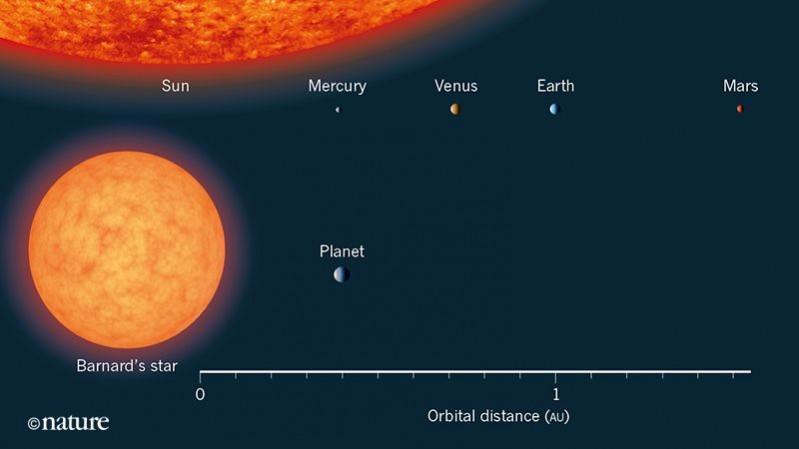
The success of the film "Aquaman" released a couple of weeks ago all over the world, grossing more than $1 billion record, is based on a fabled Atlantis or a sub-oceanic civilization that might have existed on earth. Whether it is possible on the earth or not, here's a new frozen planet that was discovered six light years away from the earth that scientists believe could harbour alien life, in its sub-oceanic layers.
The planet, under observation for the last 20 years known as 'Super Earth', is named 'Bernard b' and it is found orbiting the Bernard's Star, said a study published in Nature. The planet has minus-150 degree Celsius temperature and is believed to be extremely cold but its core could be made of hot iron or nickel. Its hyper geothermal activity could allow life to thrive, said scientists.
If water is present on Bernard b, then the geothermal heating could result in liquid water 'life zones' under its subsurface lakes, similar to what we have found in Antarctica, said UK astrophysicist Edward Guinan, speaking to media recently.
He cited the surface temperature on Jupiter's icy moon Europa as another example though because of tidal heating, Europa probably has liquid oceans under its icy surface. Once imaged in detail by very large telescopes, Bernard b will shed light on the nature of the planet's atmosphere, surface, and potential habitability.
The closest star to the Bernard b is Alpha Centauri, at about four light years away. Barnard's star is a red dwarf, and has the largest proper motion of all known stars, said the study published in Nature. At a distance of 1.8 parsecs (less than 6 light years) away from the Sun, it makes the planetary system the closest single-star system to the Sun.
The Alpha Centauri triple-star system is the only system that is closer, and also hosts at least one low-mass planet in the α Centauri system. Barnard's star is also among the least magnetically active red dwarfs, with an estimated age older than our Solar System, said the study.
The exoplanet, with a minimum mass of 3.2 times that of Earth, orbiting near its snow line and because of its proximity to the Sun, it has a maximum angular separation of 220 milliarcseconds from Barnard's star, making it an excellent target for direct imaging for future astrometric observations.
Spanish space scientists have made these recent observations with the CARMENES instrument at the 3.5-m telescope of the Centro Astronómico Hispano-Alemán de Calar Alto (CAHA, Almería, Spain) that was corroborated with other telescopes around the world.
















